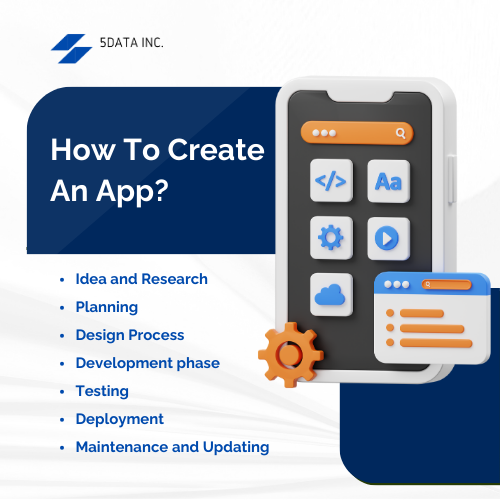In the current digital era, where smartphones have become an integral part of our everyday lives, the demand for innovation for mobile app development continues to grow, irrespective of entertainment, productivity, or staying connected to others. App developers face challenges of not just meeting but exceeding user expectations while sailing through the intricacies of app development.
In this blog, we will learn the strategies for crafting seamless experiences in app development, focusing on user-centric approaches, usability testing, and many more.
What we cover in this blog
Usability Testing and User Feedback Loops
Understanding user behavior, target audience, and their requirements is the heart of successful app development. User journeys and user personas are invaluable tools for helping developers gain insights into user expectations and needs. By associating with end users and gathering feedback throughout the development process, developers can tailor experiences to meet particular user needs and preferences. Usability testing and user feedback are critical aspects of ensuring that mobile applications deliver an intuitive and seamless experience. It can be done by conducting comprehensive usability tests, analyzing user behavior, gathering user feedback, identifying usability issues, prioritizing advancements, and iteratively improving user experiences. Finally, this user-centric approach not only enhances user satisfaction but also drives long-term success. Usability testing also generates quantitative data that can analyze user behavior deeply. Factors such as error rates, time on task, and completion rates provide objective measures of usability and help identify areas for optimization. Developers can make informed decisions.Emphasizing User Experience
A user-centric approach extends beyond the development stage. It encompasses ongoing efforts to meet user expectations and enhance user experience, which incorporates integrating interactive elements, performance optimization, and improved personalized user experiences to create engaging and immersive experiences. Developers can foster long-term user loyalty and business growth by guiding users through intuitive interfaces and anticipating their needs. The development process must incorporate load times, app responsiveness, and resource utilization, which involves erasing unnecessary graphics or heavy animation, efficient code practices, and data compression techniques to make sure apps run smoothly on multiple devices and different network conditions and optimize performance.Overcoming Unique challenges
Building applications for various devices and platforms comes with a set of unique challenges comprising compatibility issues and the need for visual design stability and consistency. As technologies can enable virtual reality and augmented reality to emerge, developers must adapt to new paradigms and ensure seamless integration with existing frameworks. By staying updated on industry trends and gaining a deep understanding of emerging technologies, developers can build immersive experiences that resonate with users across various platforms. Developers must conduct usability testing thoroughly on various devices to spot and rectify compatibility issues such as layout distortion, device-specific bugs, or font scaling problems. Utilizing responsive design principles and adaptive layouts can warrant that the app functions flawlessly across diverse screen sizes and resolutions. Consistency in visual design is important in building a cohesive and enhanced user experience. However, designing for diverse platforms like Android and IOS while retaining brand identity and visual betterment can be rigorous. Developers must stick to platform-specific design guidelines and practices while including unique brand elements to ensure that the app remains visually consistent. A renowned application-based company can provide the best mobile application development services that include testing, quality assurance, deployment, and many more.
How To Create An App?
Building a successful application involves many steps, from creativity and design to the development phase, testing, and deployment.Idea and Research
- Defining your app idea is a primary step to pave a path in developing a successful application, which involves gathering requirements, identifying its key features and functionalities, analyzing the competition, identifying a target audience, and validating your application idea to ensure there’s a demand for it.
Planning
- Planning involves defining the project scope, budget, and timeline for your app development project. Later, design, plan, layout, and navigate your app using wireframing tools to visualize the user interface and user experience.
Design Process
- The next step involves developing visual designs and user interface elements that associate with your brand and offer an intuitive user experience and building prototypes for testing the usability and functionality of your app before proceeding with development.
Development phase
- Pick a development path, and decide whether to build a native app(IOS, Android) using platform-particular languages like Swift or Kotlin or a cross-platform using frameworks like Flutter or React Native. Develop the front-end and back-end for your app, executing the features and functions outlined in the design and wireframes. Connect your app to external services or APIs for features like payments, authentication, or social media integration.
Testing
- After the development phase, testing comes next. The testing phase involves identifying bugs, usability issues, and performance problems using automated and manual testing techniques. Offering a beta version of your app to a set of real users to gather feedback and identify the areas to improve should also be considered to accelerate the testing process.
Deployment
- Deploying involves preparing your app for distribution by creating developers’ accounts on platforms like Google Play Store and Apple App Play Store and submitting the app for review. After the approval, you can launch your app publicly and promote it through marketing channels to attract users and drive downloads.
Maintenance and Updating
- Analytical tools are useful for tracking user engagement, retention, and other key metrics and identifying areas for optimization. You can continuously iterate your app based on user feedback and performance data to release updates with new features, fix bugs, and improve.
Conclusion
Crafting seamless experiences in app development requires a guided approach that prioritizes user-centric design, continuous improvement, and usability testing. Understanding user behavior, gathering user feedback, and analyzing can help developers create that not only meets but exceeds user expectations. Emphasizing user experience, optimizing performance, and overcoming unique challenges are crucial steps for delivering high-quality applications that drive user satisfaction and business growth. As the digital landscape constantly evolves, staying proactive and agile to user-centric expectations and needs will be the key to gaining popularity and sustaining success in the competitive app market. The best rapid application development company continuously stays updated about user expectations and needs and chooses to approach user-centric designs and user-friendly application interfaces with the latest updates, features, functionalities, and speed of usage.
About the Author...
Amulya Sukrutha is a passionate computer science engineer specializing in the Data science field. She also describes herself as an enthusiastic strength and endurance trainee. She played professional tennis during her early years and found her path in Software development and machine learning later. She is also passionate about creating content and learning about new technologies.
